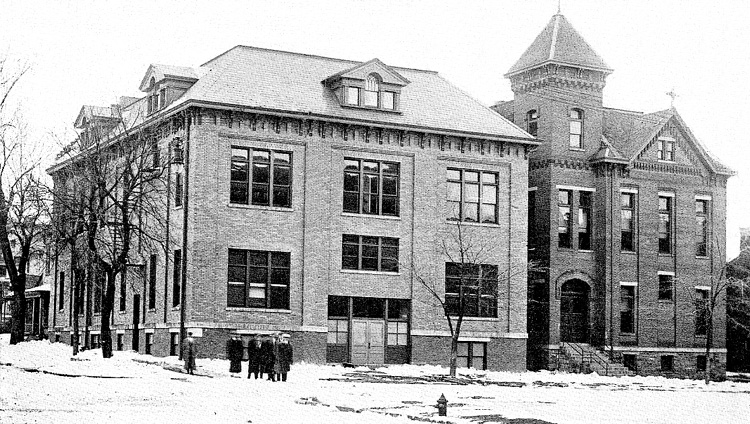By
Bob Hibbs
Private
schools were initially the sole provider of education in pioneer Iowa City,
supplemented later by parochial offerings, but eventually succeeded by
today’s public school system, which arguably is among the world’s best.
Jesse
Berry is credited with teaching the first local pupils in 1840 in a log cabin
located along College Street just west of Clinton, but several others followed
during succeeding months, and the private Mechanics Academy soon came on the
scene in 1842, just three years after Iowa City was located in the Iowa
wilderness.
Berry,
William Reynolds, Henry Lathrop and others charged fees approximating 50 cents
a month, but rarely received actual money, since there was almost none in
circulation. Rather, they were paid with a chicken, a stack of firewood, a
laundered shirt, or any item of value to the teacher. A dozen pupils
constituted a large class.
Reynolds
taught at first in the Methodist Episcopal basement located along Iowa Avenue
just west of Linn Street, but soon moved into the newly-erected Mechanics
Academy less than a block away on Linn Street just north of Iowa Avenue. He
later became Iowa’s first superintendent of public instruction.
With
formation of local city government in 1853, the new council immediately formed
a school committee through which it launched a public school system, built
three first-generation facilities as “ward schools” during 1857-58 and
then relinquished the embryonic system to an independently-elected school
board in 1858.
In
just four years, that board will mark its sesquicentennial of providing local
public education.
Meanwhile,
the large local Roman Catholic community was founding schools of its own. St.
Mary’s Church had a school in its basement as early as 1846. St. Patrick’s
Church was established in 1873 and soon opened its own school across the
street.
Subsequent
Catholic churches in 1893 St. Wenceslaus and 1962 St. Thomas Moore arranged to
send interested pupils to existing parochial schools, rather than opening
their own.
In
1904 St. Mary’s paid $4,000 for the venerable old Iowa City Academy property
in the northeast corner of the Clinton-Jefferson intersection and replaced the
structure with an auditorium in 1912. Among noted Academy alumni were local
historian and UI Prof. Ben Shambaugh, and Irish Business College owner
Elizabeth Irish.
St.
Mary’s first experimented with high school classes through its St.
Joseph’s Institute (later School), organized in 1865, located at first along
Iowa Avenue. It was moved in 1872 to the north side of Jefferson east of
Clinton as what became the eastern half to which was added the corner-located
Iowa City Academy site in 1904.
The
church also operated St. Agatha’s Seminary for women in what now is a
privately-owned apartment building called Park House across Dubuque Street
west of the Methodist Church and just down the same Jefferson Street block
from the St. Mary’s School site. Early pupils from St. Patrick’s Church
were taught next door.
From
these earlier parochial efforts, the current Regina Catholic Education Center
has grown, now offering kindergarten through senior high school grades.
P.S.
A Fargo, N.D., reader raised in Iowa City asks by email if an 1855 school bond
election noted last week in this column was open only to white males, since
the column reported that it was open only to men since women weren’t
enfranchised until the 19th amendment to the U.S. constitution was ratified in
1920.
The
reader is correct in the suspicion that blacks couldn’t have voted in 1855.
The
Iowa constitution of 1846, which was succeeded in 1857 by what is still “the
supreme law of the commonwealth,” provided suffrage to “every white male
citizen . . .”
That
language also appears in the successor document, but was stricken from it in
1868 by the first of what now total 46 amendments to Iowa’s constitution.
Bob
Hibbs collects local postcards and researches history related to them.
Copyright 2003
By Bob Hibbs
